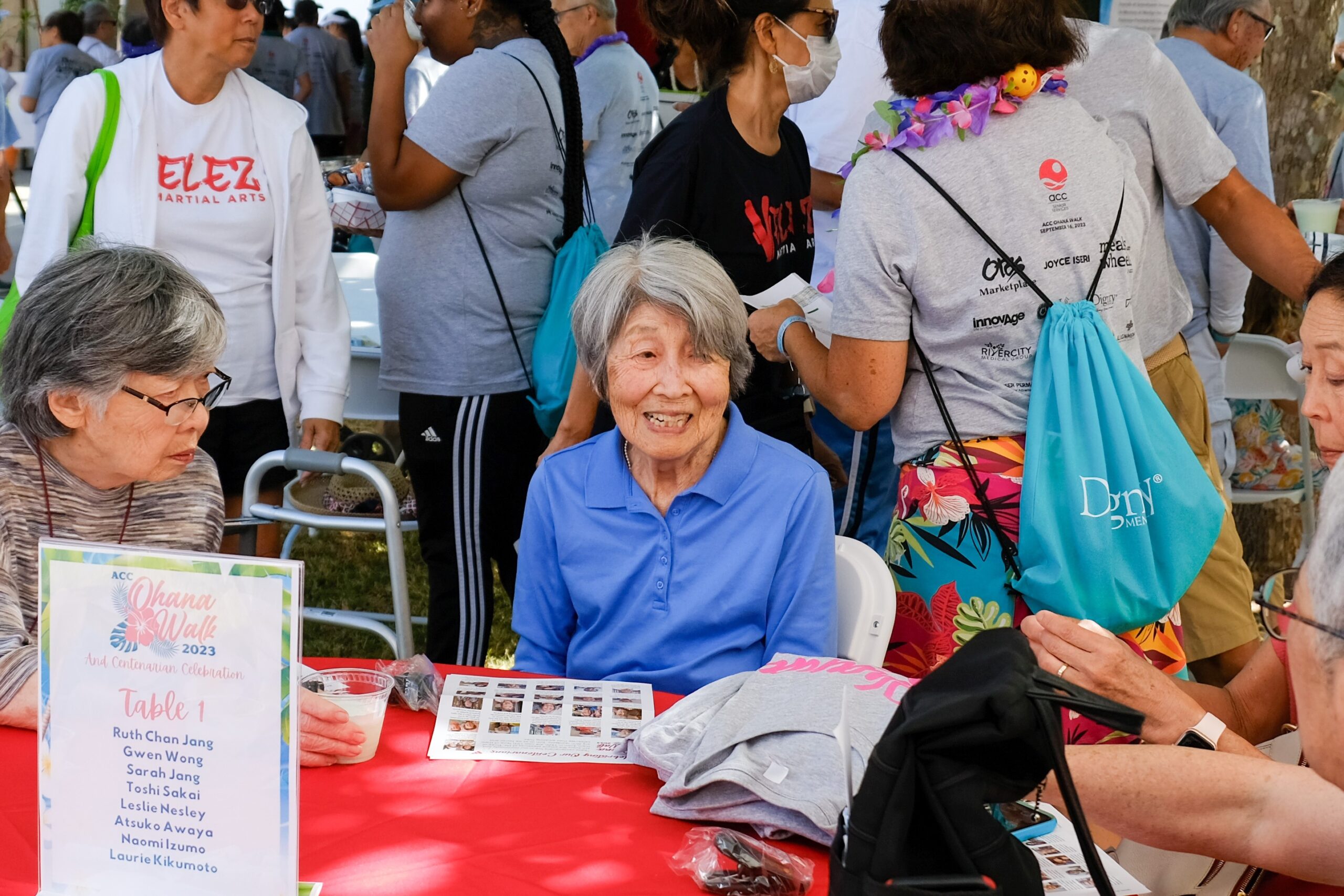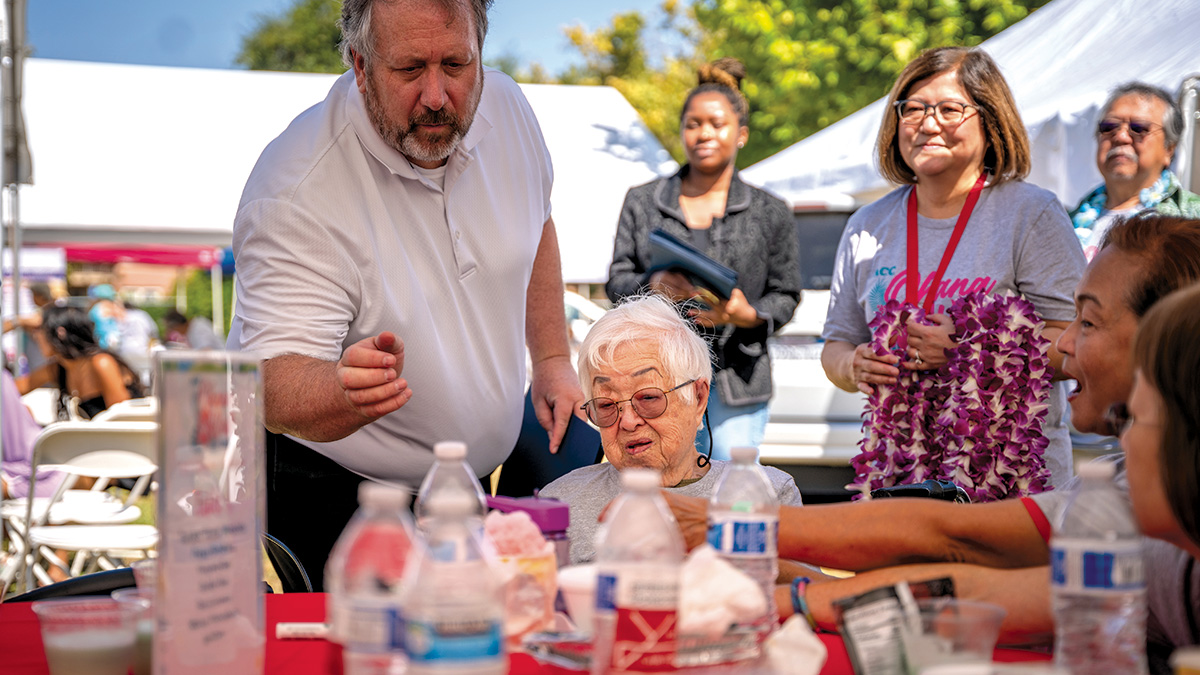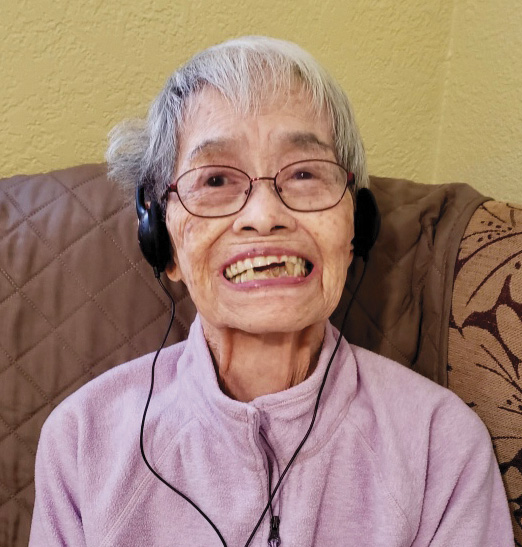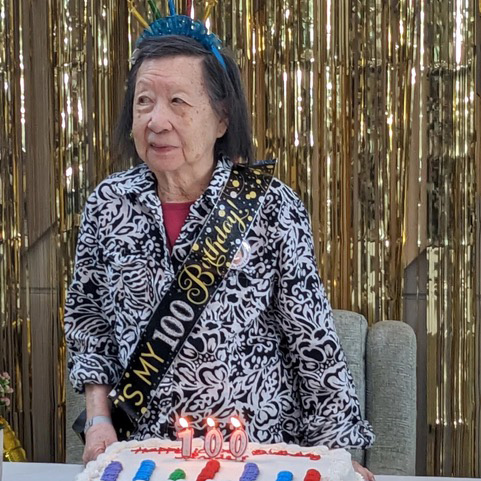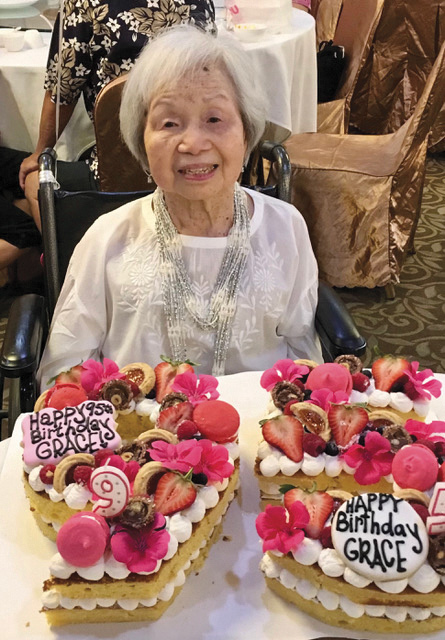Life is made up of moments…some good, some disappointing. Teruko (Terry) Hirakida has experienced lots of these moments in her 100 years of living. But she has many more good than sad moments to remember.
She was born in August 1923 in Broderick, California. Terry’s parents were Japanese immigrants who farmed in Auburn. Masaru and Hatsuye Kitagawa harvested cherries and pears. Besides Terry, they also had one son, Henry. As most children of farmers did, Terry helped with farm chores and learned to drive a tractor at a young age.
She was in her senior year at Placer Union High School when the family received notice they had to leave their farm. It was 1942. They were sent to the Tule Lake internment camp. Before they left, Terry recalls the family buried a box of valuables in the fields. The cache is probably still there, as the family never went back to retrieve it..
Her family lived on Block 51. They shared the area with four other families. In camp, she met Ichiro Hirakida, born in San Francisco. They married in June 1944. Terry gave birth to her first daughter, Lucille Reiko, in October 1945. When the camp closed, Terry’s parents and brother returned to Auburn.
Terry and Ichiro moved to Honolulu, Hawaii. They lived with one of his uncles. “The uncle didn’t like me because he had another girl picked out for Ichiro. But we were already married,” said Terry. The young family only stayed for two years before relocating to Sacramento. Their second daughter, Peggy, was born there in April 1949.
Later in life, Terry found work with the State of California, working for the Department of Motor Vehicles. She worked there for 28 years, retiring in August 1985.
She has stayed busy after retiring. She loves going to Mahoroba Japanese Bakery and shopping with friends. She was very active with Tanoshimi-Kai, attending their luncheons and organizing their casino bus trips. She coordinated these bus trips well into her 90s.
Terry lived in her own home until October 2022, when she moved into Maple Tree Village. She enjoys the different activities they offer. One of her favorites is bingo and taking field trips with other residents. Terry’s husband passed away in 1995, and her daughter Reiko passed in 2006. Though she has experienced major personal losses, she still finds much joy these days with her daughter Peggy, son-in-law Mark Ginsberg, four grandchildren and four great-grandchildren – having many good moments that she appreciates at this time in her life.


